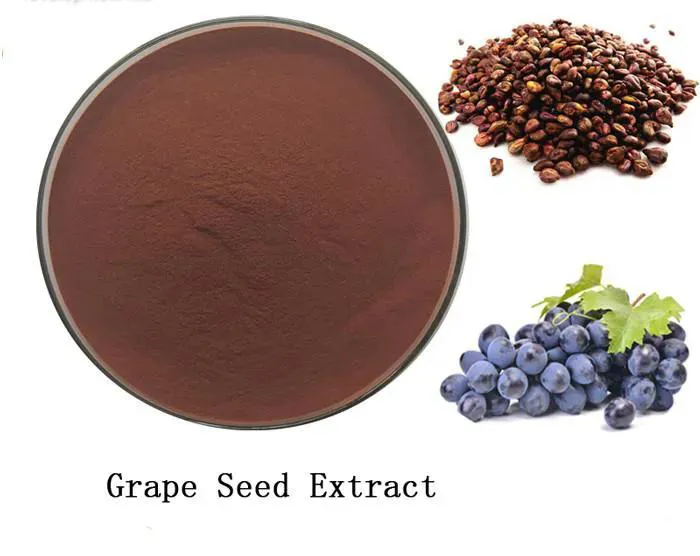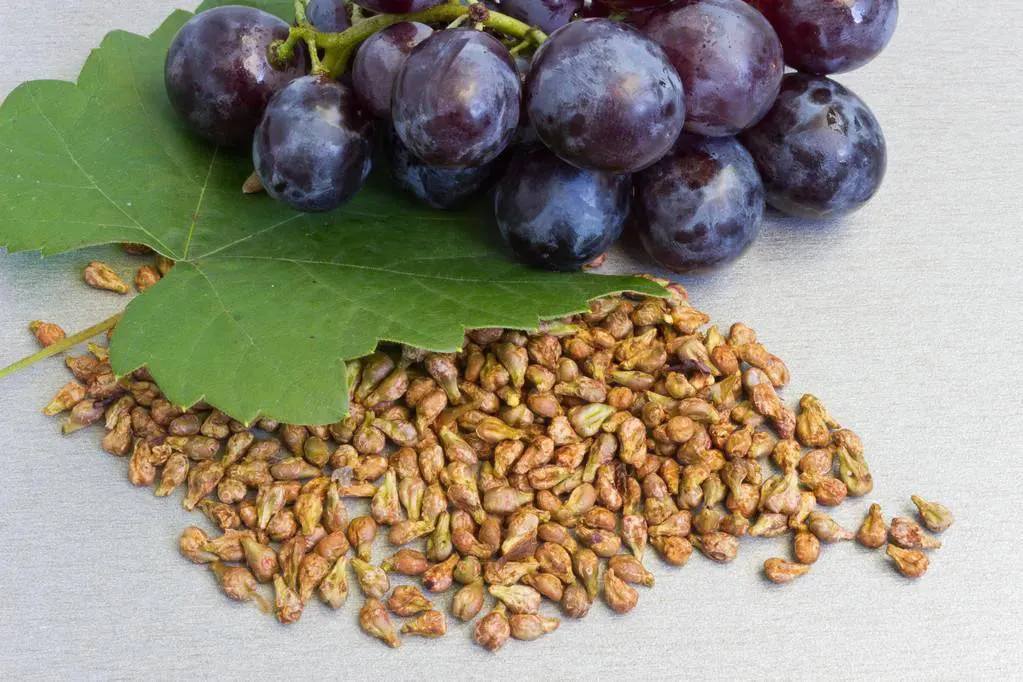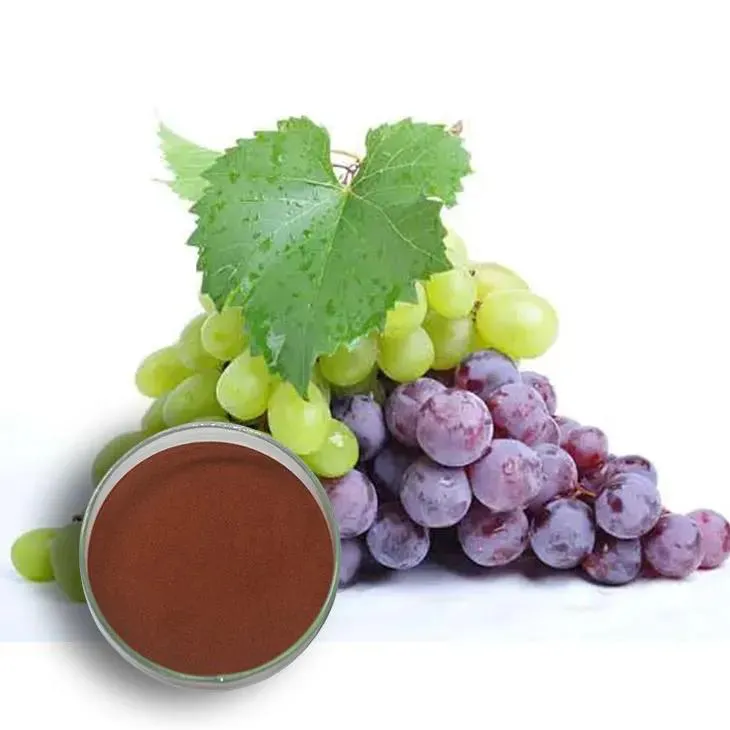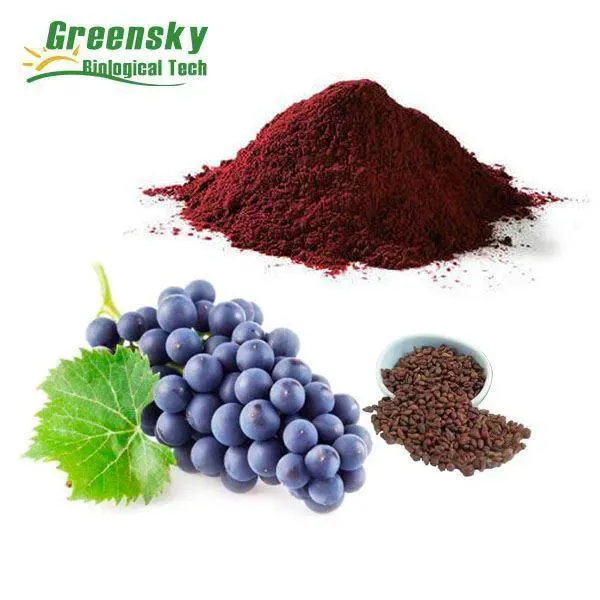- 0086-571-85302990
- sales@greenskybio.com
The Future of Nerve Repair: Grape Seed Extract and Emerging Research Directions
2024-08-06

1. Introduction
Nerve damage can have a profound impact on an individual's quality of life, leading to problems such as loss of sensation, motor dysfunction, and chronic pain. Traditional methods of nerve repair have had limitations, and thus, the search for more effective treatments is ongoing. In recent years, Grape Seed Extract has emerged as a promising candidate in the field of nerve repair. Additionally, new research directions such as gene therapy and nanotechnology applications are also showing great potential. This article will explore these aspects in detail.

2. Grape Seed Extract in Nerve Repair
2.1. Composition and Properties
Grape Seed Extract is rich in polyphenols, particularly proanthocyanidins. These compounds have antioxidant, anti - inflammatory, and anti - apoptotic properties. The antioxidant property is crucial as it helps in neutralizing free radicals that can cause damage to nerve cells. Free radicals are often generated during nerve injury due to processes such as ischemia - reperfusion injury and inflammation.
2.2. Mechanisms of Action in Nerve Repair
- Enhancing Neuronal Survival: The anti - apoptotic effect of grape seed extract promotes the survival of neurons. It inhibits the activation of apoptotic pathways, which are often triggered by nerve injury. For example, it can regulate proteins such as caspases, which play a key role in the apoptotic process.
- Reducing Inflammation: Inflammation is a major obstacle in nerve repair. Grape seed extract's anti - inflammatory properties help in reducing the production of pro - inflammatory cytokines such as interleukin - 1β (IL - 1β) and tumor necrosis factor - α (TNF - α). By reducing inflammation, it creates a more favorable environment for nerve regeneration.
- Stimulating Angiogenesis: Angiogenesis, the formation of new blood vessels, is essential for nerve repair. Grape seed extract has been shown to stimulate angiogenesis by promoting the production of vascular endothelial growth factor (VEGF). New blood vessels can supply nutrients and oxygen to the damaged nerve area, facilitating repair.
2.3. Current Research Findings
Several pre - clinical studies have demonstrated the potential of grape seed extract in nerve repair. In animal models of nerve injury, treatment with grape seed extract has shown improved nerve function recovery. For instance, in a sciatic nerve injury model in rats, those treated with grape seed extract exhibited better locomotor function compared to the control group. Histological analysis also revealed increased axonal regeneration and myelination in the treated animals.

3. Gene Therapy in Nerve Repair
3.1. Basic Concepts of Gene Therapy
Gene therapy involves the introduction of genetic material into cells to correct or modify a genetic defect or to achieve a therapeutic effect. In the context of nerve repair, the goal is to introduce genes that can promote nerve regeneration, enhance neuronal survival, or modulate the immune response. There are two main approaches: in vivo gene therapy, where the genetic material is directly delivered to the target tissue in the body, and ex vivo gene therapy, in which cells are removed from the body, modified genetically, and then re - implanted.
3.2. Genes of Interest in Nerve Repair
- Growth Factors: Genes encoding growth factors such as nerve growth factor (NGF), brain - derived neurotrophic factor (BDNF), and glial cell line - derived neurotrophic factor (GDNF) are of great interest. These growth factors play important roles in promoting neuronal survival, axonal growth, and synapse formation. For example, NGF is essential for the development and maintenance of sensory and sympathetic neurons.
- Anti - Inflammatory Genes: Genes that can reduce inflammation in the nerve injury site are also being explored. For instance, interleukin - 10 (IL - 10) is an anti - inflammatory cytokine, and introducing the gene encoding IL - 10 can potentially reduce the excessive inflammation that often hinders nerve repair.
3.3. Delivery Systems for Gene Therapy
- Viral Vectors: Viral vectors such as adenoviruses and lentiviruses are commonly used for gene delivery. They have the advantage of high transduction efficiency, meaning they can effectively introduce the genetic material into the target cells. However, they also have some drawbacks, such as potential immunogenicity and the risk of insertional mutagenesis.
- Non - Viral Vectors: Non - viral vectors like liposomes and polymeric nanoparticles are being developed as alternatives. They are generally safer than viral vectors but have lower transduction efficiency. Research is ongoing to improve their performance in gene delivery.

4. Nanotechnology in Nerve Repair
4.1. Nanomaterials for Nerve Repair
- Nanofibers: Nanofibers can be used to create scaffolds for nerve regeneration. These scaffolds can mimic the extracellular matrix and provide a physical support for nerve cells to grow. They can also be functionalized with bioactive molecules such as growth factors to further enhance nerve repair.
- Nanoparticles: Nanoparticles can be used for drug delivery in nerve repair. For example, they can encapsulate drugs or growth factors and release them in a controlled manner at the nerve injury site. This can improve the efficacy of the treatment and reduce side effects.
4.2. Nanotechnology - Assisted Diagnosis of Nerve Damage
Nanotechnology can also be applied in the diagnosis of nerve damage. For example, nanoparticle - based sensors can detect biomarkers of nerve injury. These sensors can be highly sensitive and specific, allowing for early and accurate diagnosis of nerve damage. Early diagnosis is crucial as it can enable timely intervention and improve the prognosis of nerve repair.
4.3. Challenges and Future Directions in Nanotechnology for Nerve Repair
- Biocompatibility: Ensuring the biocompatibility of nanomaterials is a major challenge. Nanomaterials need to be non - toxic and not cause an immune response in the body. Research is focused on developing biocompatible nanomaterials for nerve repair.
- Targeted Delivery: Improving the targeted delivery of nanomaterials to the nerve injury site is another area of research. This can enhance the effectiveness of treatment by ensuring that the therapeutic agents are delivered precisely where they are needed.

5. Combining Approaches for Optimal Nerve Repair
Combining different approaches such as using grape seed extract along with gene therapy or nanotechnology - based treatments may lead to more effective nerve repair. For example, grape seed extract can be used in combination with gene - modified cells delivered by nanotechnology - based carriers. The antioxidant and anti - inflammatory properties of grape seed extract can create a more favorable environment for the survival and function of the gene - modified cells. This combined approach has the potential to overcome the limitations of individual treatment methods and enhance nerve repair outcomes.
6. Conclusion
The future of nerve repair holds great promise with the exploration of grape seed extract and emerging research directions such as gene therapy and nanotechnology. Grape seed extract has shown its potential through its various beneficial properties in nerve repair. Gene therapy offers the possibility of directly modifying the genetic makeup of cells involved in nerve repair, while nanotechnology provides innovative tools for drug delivery, scaffold formation, and diagnosis. By further exploring these areas and combining different approaches, we may be able to revolutionize the treatment of nerve damage and improve the quality of life for those suffering from nerve - related disorders.
FAQ:
What is the role of grape seed extract in nerve repair?
Grape seed extract contains various bioactive compounds such as polyphenols. These compounds may have antioxidant, anti - inflammatory and neuroprotective properties. The antioxidant property can help reduce oxidative stress which is often associated with nerve damage. Anti - inflammatory effects can mitigate the inflammation that may impede nerve repair. And its neuroprotective nature may directly protect the nerve cells from further damage and promote their regeneration.
How could gene therapy applications change nerve repair?
Gene therapy has the potential to revolutionize nerve repair. It can be used to introduce genes that code for growth factors or proteins essential for nerve regeneration. For example, genes for nerve growth factor (NGF) could be inserted into damaged nerve cells or surrounding tissues. This would enhance the production of NGF, which in turn can stimulate the growth and repair of nerves. Additionally, gene therapy can correct genetic mutations that may be causing nerve - related disorders, thus providing a more targeted and long - term solution for nerve repair.
What is the potential of nanotechnology in nerve repair?
Nanotechnology offers several exciting possibilities in nerve repair. Nanoparticles can be designed to deliver drugs or growth factors directly to the site of nerve damage with high precision. They can be engineered to cross the blood - nerve barrier more effectively, which is a major challenge in traditional drug delivery for nerve repair. Nanomaterials can also be used to create scaffolds that mimic the natural extracellular matrix, providing a physical support for nerve cells to grow and reconnect. Moreover, they can be functionalized to interact with nerve cells in a specific way, promoting their survival, growth and differentiation.
Are there any side effects associated with using grape seed extract for nerve repair?
While grape seed extract is generally considered safe, in some cases, it may cause side effects. Some people may experience mild gastrointestinal issues such as nausea, stomach upset or diarrhea. In rare cases, allergic reactions may occur. However, these side effects are not common and usually occur at high doses or in individuals with pre - existing sensitivities. More research is needed to fully understand the long - term safety profile of grape seed extract specifically in the context of nerve repair.
How far are we from seeing these emerging research directions (gene therapy and nanotechnology) being applied in clinical nerve repair?
Gene therapy and nanotechnology in nerve repair are still in the research and development stage. For gene therapy, there are challenges such as ensuring the safe and efficient delivery of genes, and avoiding immune responses. While some pre - clinical studies have shown promising results, clinical trials are still limited and more research is needed to overcome these hurdles. Nanotechnology also faces similar issues regarding biocompatibility, long - term stability and large - scale production. However, with the continuous progress in research, it is expected that in the next few decades, we may start to see some of these emerging technologies being applied in clinical nerve repair.
Related literature
- The Role of Grape Seed Extract in Nerve Regeneration"
- "Gene Therapy for Nerve Repair: Current Progress and Future Prospects"
- "Nanotechnology in Nerve Tissue Engineering: A Review"
- ▶ Hesperidin
- ▶ citrus bioflavonoids
- ▶ plant extract
- ▶ lycopene
- ▶ Diosmin
- ▶ Grape seed extract
- ▶ Sea buckthorn Juice Powder
- ▶ Beetroot powder
- ▶ Hops Extract
- ▶ Artichoke Extract
- ▶ Reishi mushroom extract
- ▶ Astaxanthin
- ▶ Green Tea Extract
- ▶ Curcumin Extract
- ▶ Horse Chestnut Extract
- ▶ Other Problems
- ▶ Boswellia Serrata Extract
- ▶ Resveratrol Extract
- ▶ Marigold Extract
- ▶ Grape Leaf Extract
- ▶ blog3
- ▶ blog4
- ▶ blog5
-
Eyebright Extract
2024-08-06
-
White Willow Bark Extract
2024-08-06
-
Bilberry Extract
2024-08-06
-
Saw Palmetto Extract
2024-08-06
-
Centella Asiatica Extract
2024-08-06
-
Curcuma Longa Extract/Turmeric extract
2024-08-06
-
Gynostemma pentaphyllum extract
2024-08-06
-
Golden Seal Extract
2024-08-06
-
Cocoa Extract
2024-08-06
-
Medicinal Marshmallow Extract
2024-08-06





















